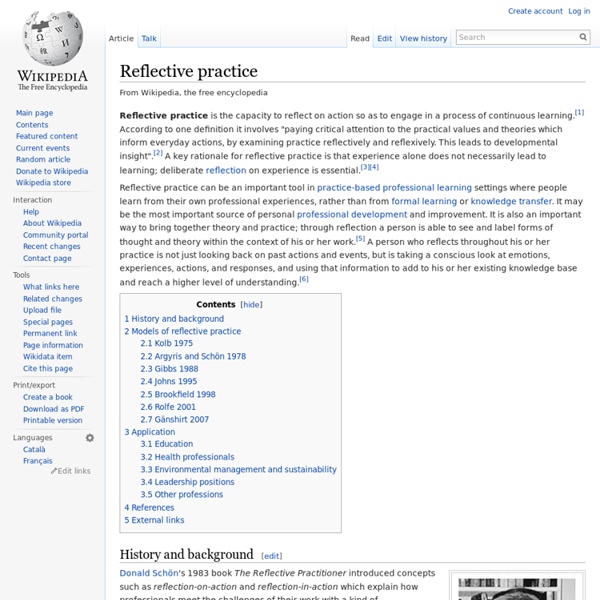Mind Mapping in Education
Educators and students have been drawing concept maps and mind maps on paper for many years. Visual software applications, in particular mind mapping tools, have automated this process, making it more efficient to brainstorm concepts as ideas or branches. This allows for the creation of much larger mind maps, and the ability to easily re-organized branches by dragging and dropping them around the map. Furthermore, some mind mapping software applications integrate with MS Office, allowing students to convert their ideas into other documents such as Word or PowerPoint. In education, mind mapping is often used for: Brainstorming sessionsVisualizing conceptsImproving critical thinkingDecision makingImproving reading and writing skillsAdvanced research papers or graduate projectsOutlining written documentsStoryboarding presentationsProject management It is a known fact that working with mind maps helps students organize their ideas and understand concepts better.
Experiential learning
Experiential learning is the process of making meaning from direct experience, i.e., "learning from experience".[1] The experience can be staged or left open. Aristotle once said, "For the things we have to learn before we can do them, we learn by doing them".[2] David A. Kolb helped to popularize the idea of experiential learning drawing heavily on the work of John Dewey, Kurt Lewin, and Jean Piaget. His work on experiential learning has contributed greatly to expanding the philosophy of experiential education. Overview[edit] Experiential learning is learning through reflection on doing, which is often contrasted with rote or didactic learning. Experiential learning focuses on the learning process for the individual. A third example of experiential learning is learning how to ride a bike,[4] a process which can illustrate the widely known four-step experiential learning model (ELM) as purported by Kolb[5] and outlined in Figure 1 below. Implementation[edit] Did you notice...? People[edit]
Mind map
Diagram to visually organize information A mind map is a diagram used to visually organize information into a hierarchy, showing relationships among pieces of the whole.[1] It is often created around a single concept, drawn as an image in the center of a blank page, to which associated representations of ideas such as images, words and parts of words are added. Major ideas are connected directly to the central concept, and other ideas branch out from those major ideas. Mind maps can also be drawn by hand, either as "notes" during a lecture, meeting or planning session, for example, or as higher quality pictures when more time is available. Mind maps are considered to be a type of spider diagram.[2] Differences from other visualizations [edit] Joeran Beel and Stefan Langer conducted a comprehensive analysis of the content of mind maps.[15] They analysed 19,379 mind maps from 11,179 users of the mind mapping applications SciPlore MindMapping (now Docear) and MindMeister. Education portal
Reflective Practice: An Approach for Expanding Your Learning Frontiers | Urban Studies and Planning
Mind Mapping in Education - MindMeister
Introduction to developing reflective practice at UKCLE
In exploring how reflective practice can support and aid learning it is helpful to acknowledge how we learn. The following points can be made about the process of learning. First and foremost, learning is individual. All learners start from their own position of knowledge and have their own set of experiences to draw upon. “Reflection is an important human activity in which people recapture their experience, think about it, mull it over and evaluate it. It is at this point that students can make use of feedback from tutors and peers. The final point to acknowledge is that learning is developmental. In summary, we can view reflection as having four main purposes (see figure 1). Reflection helps learners to: understand what they already know (individual) identify what they need to know in order to advance understanding of the subject (contextual) make sense of new information and feedback in the context of their own experience (relational) guide choices for further learning (developmental)
CmapTools - Documentation
The CmapTools documentation is organized as a Knowledge Model composed of concept maps and associated resources, constructed with CmapTools itself. The following is a categorized list of the Cmaps in the Knowledge Model, for direct access. Home Cmap for the Site Home Cmap of the CmapTools Web site General Descriptions of the CmapTools Toolkit Root Cmap: General Description of Software General Description of the Network Architecture of CmapTools Description of the Various Collaboration Features of CmapTools The Views: Storing and Organizing Cmaps and Knowledge Models on the Network, plus History and Favorites My Cmaps: Storing and Organizing Cmaps and Knowledge Models in your Computer Automatic and On-Demand Generation of Web Page versions of Cmaps User IDs and Passwords for Identification during Collaboration and for Permissions Specific Collaboration Features of CmapTools Synchronous Collaboration: Two or more Users Editing the Same Cmap at the Same Time (Concurrently), with Chat
Practice-based professional learning
The range of concerns may be seen, for example, in the UK Open University's practice-based professional learning centre,[1] one of the Higher Education Funding Council for England's centres for excellence in teaching and learning.[2] Its interests cover the inter-relation of various forms of professional knowledge, ways of fostering them and their co-ordination, workplaces as sites of learning, the assessment of practice-based learning achievements, and the use of modern technologies to support distributed learning. Other centres for excellence occupy some or all of the territory, notably the Professional Development Unit at the University of Chester,[3] SCEPTrE in the University of Surrey,[4] CEPLW in the University of Westminster[5] and NCWBLP in Middlesex University.[6] Interest in this territory is not confined to the UK, with some of the most respected work associated with David Boud at the University of Technology, Sydney, NSW.[7] See also[edit] Reflective practice References[edit]



